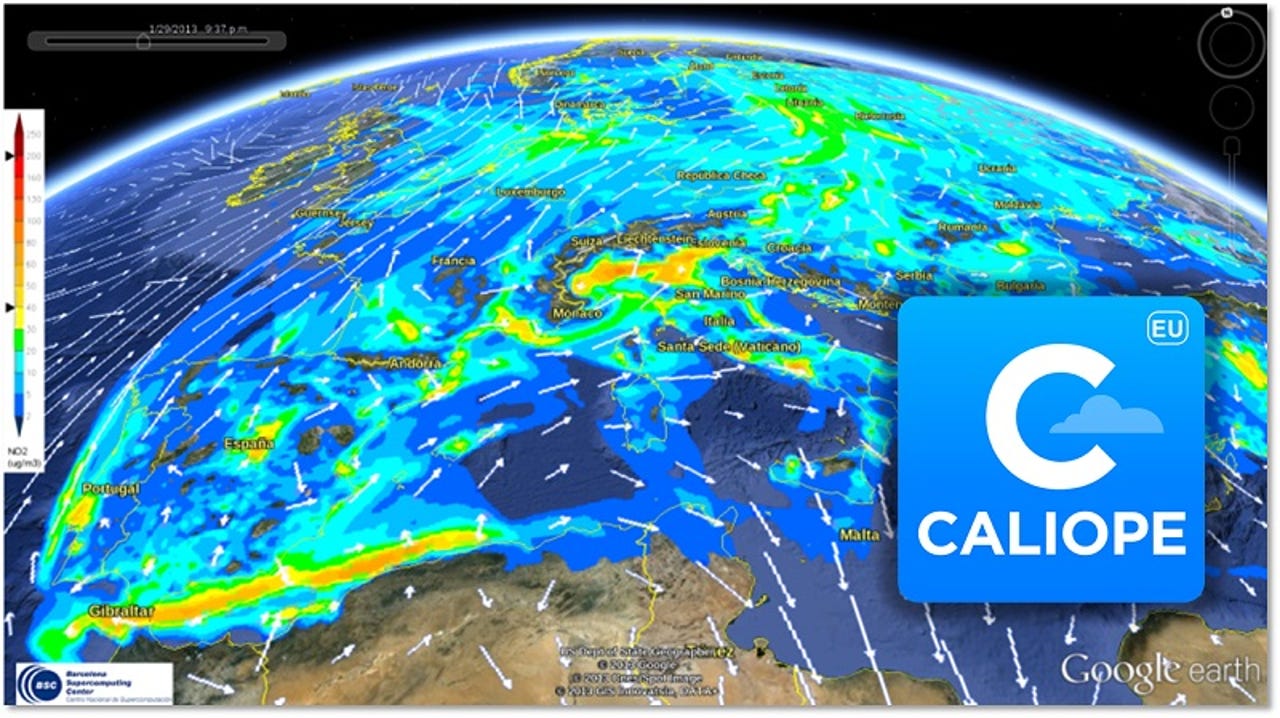How supercomputing power is helping with anti-pollution plans like city-wide car bans


Caliope runs on Spain's most powerful supercomputer, the MareNostrum in the Barcelona Supercomputing Center.
In about 80 percent of the cities around the world, air pollution exceeds safe levels, according to the World Health Organization, which also says about 92 percent of citizens live in these polluted areas. By far the biggest culprit for the air pollution is traffic.
Named after the Greek goddess of eloquence and the muse of epic poetry, the Calliope air-quality forecast system in Spain can determine levels of the main atmospheric pollutants, such as ozone, nitrogen dioxide, sulfur dioxide, and airborne particles. It provides air-quality forecasts for Europe down to the square kilometer and by the hour.
To be able to achieve those levels of detail, it brings together several systems. These include the Hermes emission model, the WRF-ARW meteorological model, the BSC-Dream8b model, and the CMAQ chemical transport model, all running together on Spain's most powerful supercomputer, the MareNostrum in the Barcelona Supercomputing Center, whose Earth Sciences Department developed the modeling tool.
To generate a set of predictions covering 48 hours, Caliope needs to run the software on about 300 CPUs for six hours.
Using this computational power, researchers are able to alert authorities to upcoming peaks in pollution. Caliope's predictions are not only crucial in supporting decisions about improving air quality but also help develop simulations to assess the impact on cities of certain measures, such as restricting traffic at times of high health risk.
But there is inevitably an element of uncertainty "because the atmosphere is chaotic and because predictions are not perfect", says professor Carlos Pérez Garcia-Pando, head of the Atmospheric Composition at BSC Group.
So a big part of his job is to educate authorities on "the capacities of the model and its usefulness", so that administrations can inform citizens and weigh up what measures to take. What measures might be the most effective is a different question.
At Smart City Expo World Congress, held in Barcelona last November, a representative from the Greater London Authority confessed that the congestion charge to limit the number of cars coming to the city hasn't worked.
Paris and Madrid are also restricting traffic when a grey veil of dirty air blurs their skylines, because high levels of pollutants can cause asthma, allergies, and circulatory and respiratory diseases.
Pérez García-Pando, whose research focuses on understanding the physical and chemical processes controlling atmospheric aerosols, and evaluating their effects on climate, ocean biogeochemistry, air quality and health, is convinced that solutions need to be "technical and not ideological".
Although he acknowledges that solutions inevitably come from process of a trial and error, he says precise data is crucial. This is why he and his team are working on improving the accuracy of Caliope's predictions down to the street level in Barcelona.
The Catalan government is discussing using Caliope in the Catalan region, in collaboration with Catalan meteorology service Meteocat and the Barcelona City Council. The main goal is getting data on the impact of certain measures to see whether it is possible to make decisions about restricting traffic, similar to those taken in Paris and Madrid.
The European Commission recently sent final warnings to Spain to address repeated breaches of air pollution limits for nitrogen dioxide, especially in Madrid and Barcelona.
Meanwhile, the Environment Secretariat of the Government of Mexico City, SEDEMA, announced that it is adopted Caliope to predict air quality in the Mexican capital and evaluate measures to reduce pollution levels.
The system, funded by the Spanish Ministry of Agriculture, Food and Environment, is also providing services to small private initiatives, and is available via web and an app for iPhone and Android.
It has the potential to improve its performance when BSC's MareNostrum supercomputer increases its computational power 12-fold to achieve 13.7 petaflops during the first trimester of 2017.